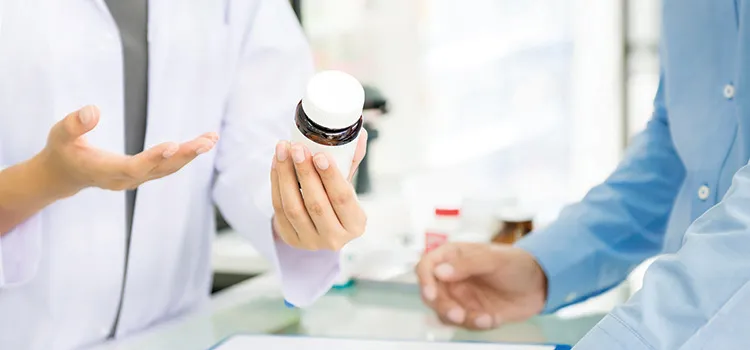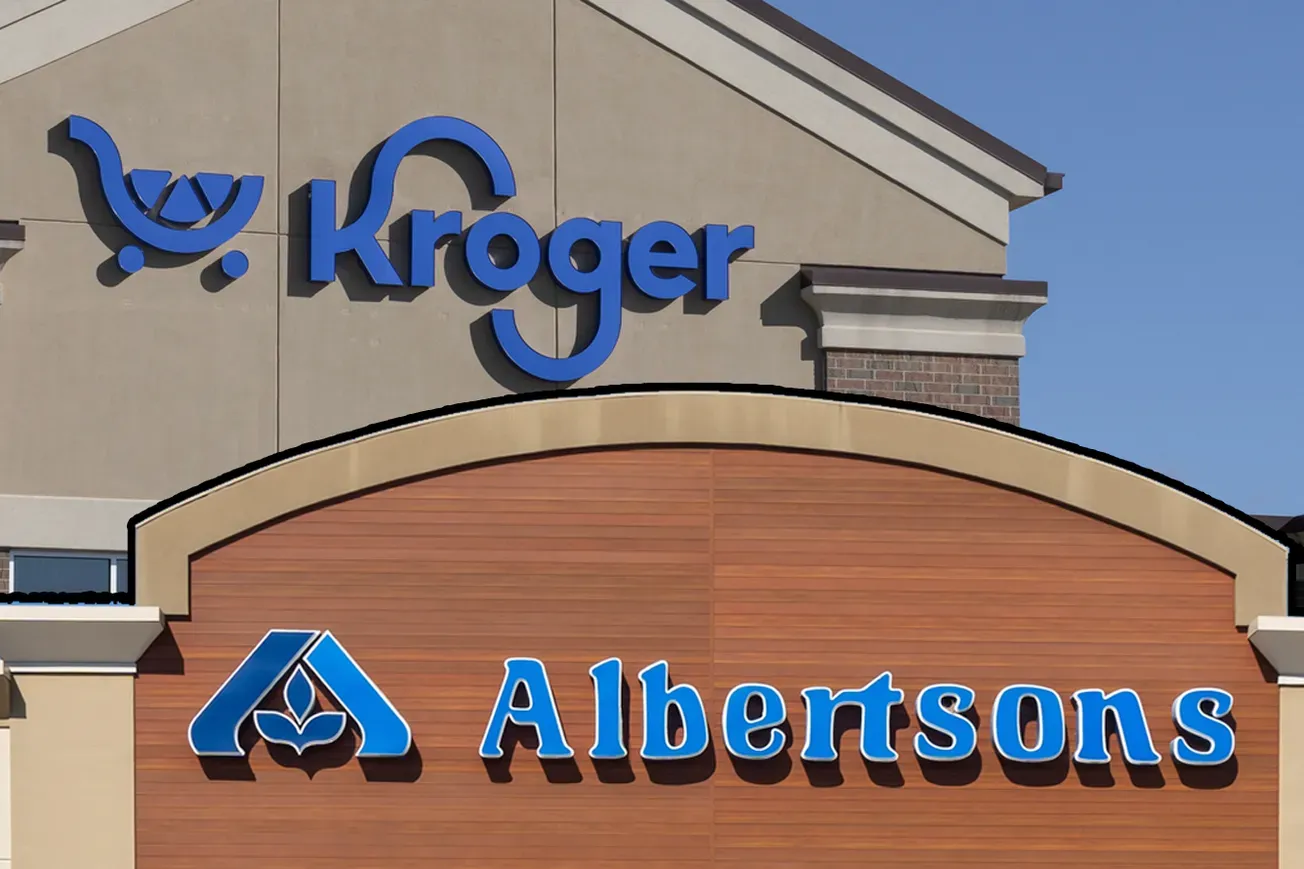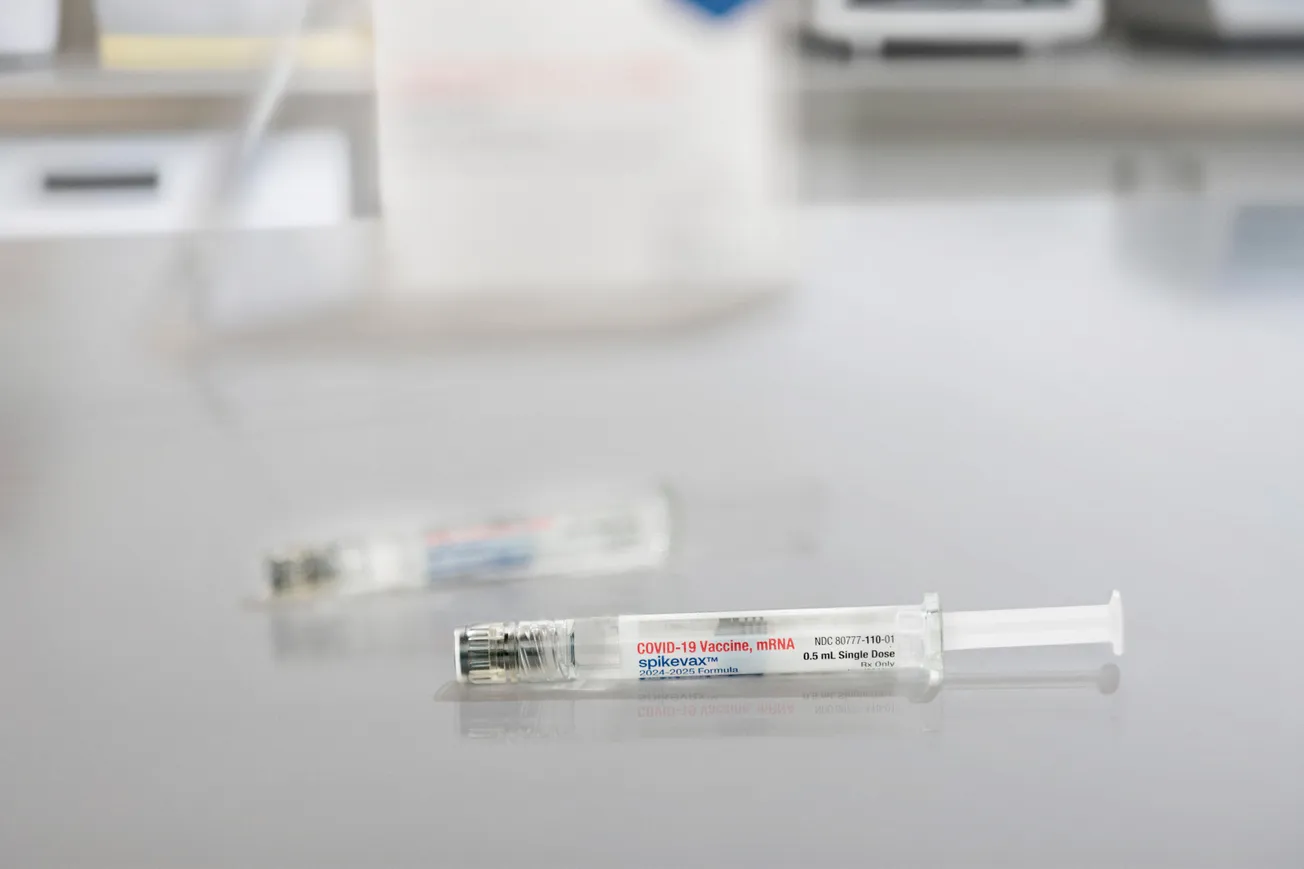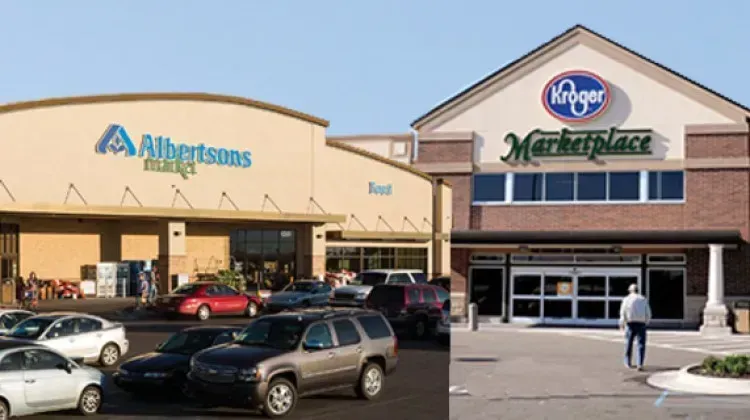Technology is crucial to building on the momentum pharmacies gained during the pandemic. Retailers and suppliers on the following pages delve into how technological advances can free up pharmacists for greater patient interaction and to provide new services. They discuss the integral role of technology in pharmacy offerings from vaccinations to help with home diagnostics.
Q: What new pharmacy technologies are you most excited about?
JHAVERI: There’s no doubt about it — the pharmacy industry is ripe for disruption, and now the industry is coming together to push pharmacy forward and maintain its momentum. The technologies I’m most excited about are:
- Those that help increase efficiency and productivity so pharmacists can focus on patient care.
- Solutions that help pharmacists practice at the top of their license.
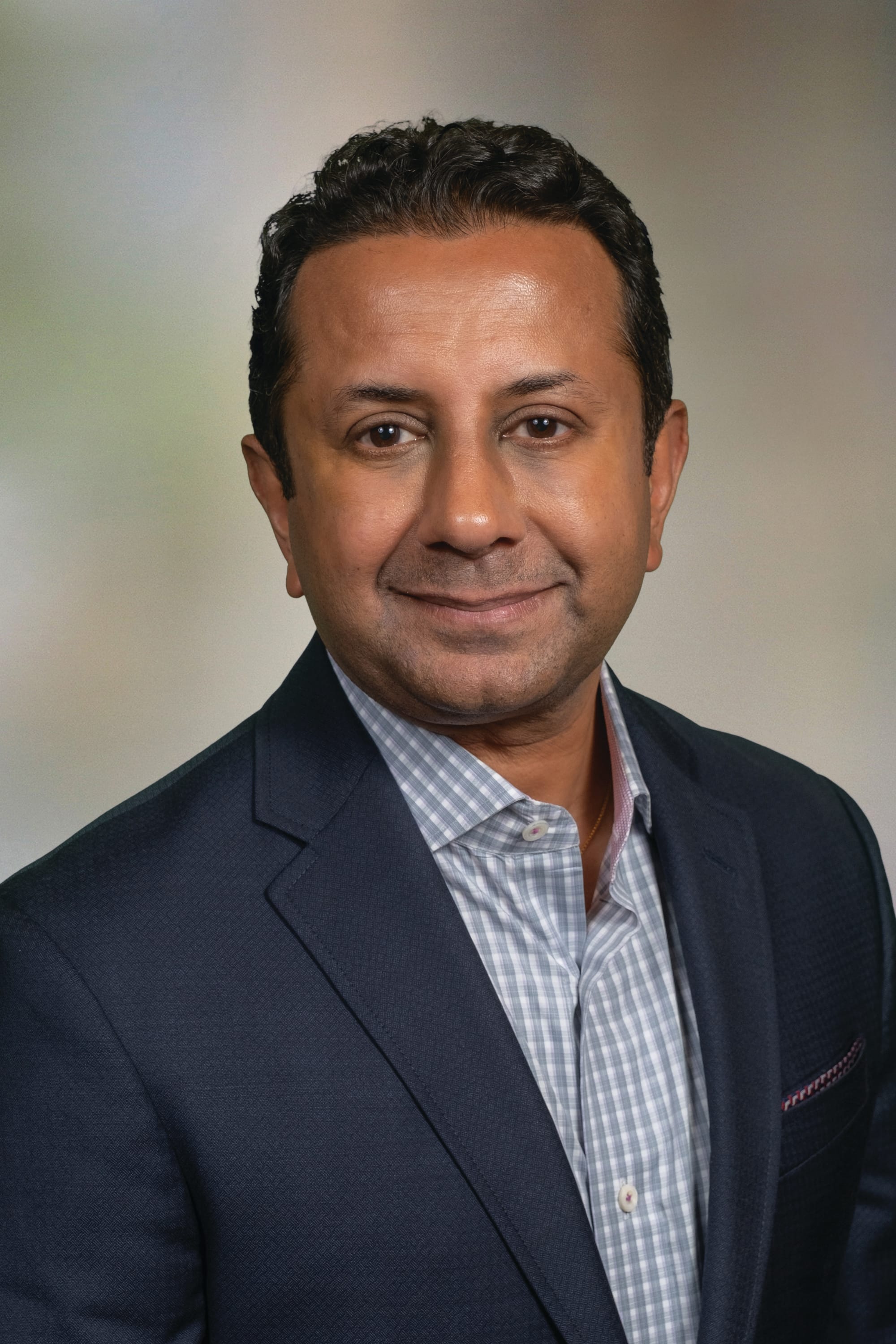
Nimesh Jhaveri, President, Community Pharmacy and Health McKesson
Whether it’s upgrades to the community pharmacy inventory management system or the use of artificial intelligence to streamline workflow, community pharmacists must embrace innovative, practical solutions. These tools can help pharmacists make the most of limited resources, deliver better patient care and help make time to explore new services or solutions.
Advances in diagnostic technologies continue to expand horizons for pharmacists and allow them to practice at the top of their license. In fact, I’m very proud of McKesson’s recent partnership with Lucid Hearing, which will provide Health Mart pharmacies with diagnostic screening equipment and access to over-the-counter hearing products. In-store hearing screenings will enable our Health Mart pharmacists to guide their patients and ensure they receive the right O-T-C hearing aid products for their needs.
SHAH: We are accelerating the transformation of our operating model by leveraging automation and technology to free up our pharmacists’ time. These recent investments and new services work together to not only serve our communities but also foster fulfilling and purpose-driven work for our team members. This includes our micro-fulfillment centers, which use robots to fill prescriptions. These centers will handle as much as 50% of a store’s prescription volume by 2025. Additionally, our new inventory management system uses historical data to more accurately predict and replenish a store’s inventory, ultimately empowering our pharmacy teams to provide the right drug to the right patient at the right time.
Through comprehensive, personalized consultations, our pharmacists can uncover gaps in care and barriers to adherence and offer tailored solutions leading to improved health outcomes.
LASHIER: Any technology that can allow for in-store pharmacy staff to increase quality time spent with their patients is something to be excited about. From central fill technologies that relieve filling burdens and can give pharmacy staff more time to consult and care for their patients to the continued integrations of intelligent data systems that allow staff to provide data-backed advice tailored to each patient’s individual care, technology is helping to extend patient-driven choices including how, when and where patients receive care.
HEISER: I am most excited about the technologies that support pharmacists’ ability to practice to their full potential. Patients have so much to gain from access to their pharmacists if we support our pharmacists and pharmacies teams in the right way. The technologies that break down barriers and enable care delivery in pharmacy are what get my attention. There is no one singular solution that will address all the barriers preventing pharmacists from living up to their full potential in helping patients manage their chronic conditions, support transitions of care and age in place. The good news is that the solutions exist for the willing and able. There will always be barriers, but we can’t let them stand in the way of helping our patients live healthier lives.
WYSONG: Emerging telehealth technology continues to offer the hope and promise of better patient coordination and adherence in a post COVID-19 world. New medication therapy management platforms, live video counseling, drug treatment monitoring, integration of diagnostic test results, and up-to-date compliance and adherence factors, make it possible to integrate these facets into a single comprehensive patient care solution. This is a critical step in finally addressing the unsustainable costs of chronic disease state management in our current health care system.

Graham Burks, Director, Product Management Outcomes
BURKS: Pharmacy burnout is a very real challenge. Pharmacies are experiencing staffing shortages, high levels of stress and increased workloads. We recognize this challenge, and our main focus is to provide solutions and technology that are going to help pharmacies optimize their time and their staff’s workload, so they can spend more time on meaningful patient interactions. Several of the solutions we offer through our platform, such as virtual verification, pill counting and scheduling capabilities, help offer relief from manual tasks, which in turn frees up pharmacists to provide more clinical services and practice at the top of their license.
HARDING: Compliance solutions for DSCSA [Drug Supply Chain Security Act] will have a real impact on the industry in 2023. End-to-end solutions are now a reality, and pharmacies that proactively leverage this technology to meet their regulatory obligations will achieve the required interoperability with minimal disruption and be advantageously positioned to enjoy real benefits beyond compliance. Connecting serialized data to improve recall processes and reverse distribution will further enhance both patient safety and business results.
I am also excited about enhanced tools and references for managing effective-rate contracts. Master payer data can help pharmacies understand all the business lines involved in specific contracts. There are best practices guides that can help pharmacies navigate the language in these contracts so that they can understand, influence and measure their performance for success. Automated contract rate reconciliation is a must-have in an environment of both contracted rates and effective rates if pharmacies are going to fully recover all of the revenue due to them.

Brian Sullivan, Principal – Pharmacy Solutions North America KNAPP
SULLIVAN: The technologies that we see freeing up pharmacists and techs for value-added processes continue to evolve and excite us. In retail, we are seeing automated scanning of incoming medications for DSCSA compliance combined with automated, picking, dispensing and labeling of medications. For instance, KNAPP-Store type technologies open up space for additional revenue sources in testing, vaccinations counseling, etc. while freeing up the pharmacists to work at the top of their license. Also the introduction of 24-7 Terminals with real-time dispensing of medications and O-T-C drugs has helped the retail pharmacies meet the demands of a public that wants to pick up their meds, or have them delivered, on their terms. While lockers and other after-hours access systems that require preplanning have been in place for a while, these fully automated systems now include telepharmacy and meth check capabilities to expand patient access while again freeing up time for the pharmacy associates. Most exciting could be the combined solutions for grocery chain pharmacies that marry in-store MFCs [micro-fulfillment centers] for grocery with in-store automated pharmacy systems for a single 24/7 dispense at drive-thru and walk-up locations. KNAPP is involved in both of these vertical markets, so we have had an opportunity to work directly with our customers in this space. It is a very dynamic time.
Q: How can technology help pharmacists build on the elevated status they established during the pandemic?
SHAH: Pharmacists have always been a critical component of a patient’s health care team. But the COVID-19 pandemic further shifted consumer behavior to place even greater value on convenience, safety and cost savings, accelerating the use of digital pharmacy services tools, virtual visits and prescription delivery services. Therefore, we’re shifting how we fill and dispense medications in order to harness our pharmacists’ doctorate level of health care training to offer high-quality health care services to our patients. This includes advising patients on managing their diseases and medications, offering testing and prescribing services, and providing preventative treatment and care.
WYSONG: The COVID-19 pandemic reminded all of us of the important role that pharmacy plays in health care. The heightened sense of vulnerability through the pandemic proved the critical role pharmacy plays in identifying and treating the most vulnerable of patients. Technology must be flexible in identifying and allowing for the natural expansion of reach by pharmacy and critical care providers. Telemedicine will continue to be a relevant tool in maintaining patient standards and reaching those patients who oppose in-person visits. We will likely see more focus placed on identifying and treating chronic disease states, which increases greater susceptibility to other health care-related illnesses and likely increases costs for payers and consumers.
HEISER: For most community pharmacists, a majority of their time is still devoted to tasks related to prescription fulfillment, including interpreting benefit coverage and formulary details, clarifying prescriptions and/or gathering data for prior authorizations over the phone with providers as well as final product verification. These tasks, along with staffing shortages, stand in the way of pharmacists being able to build on the elevated status achieved during the pandemic. Fortunately, there are numerous technologies that can help create efficiencies, thereby freeing up the pharmacist and pharmacy team to engage with patients. For example, communicating with a provider electronically utilizing RxChange, which is part of the NCPDP SCRIPT Standard, can save countless calls or faxes between the pharmacist and provider. This electronic means of communication saves the pharmacy and provider time addressing therapeutic alternative requests, prior authorizations, drug use that needs to be evaluated and prescription clarifications. Other technologies that free up pharmacists to engage patients, such as automation, central fill and workload balancing, are also important pieces of the puzzle to give pharmacists more time to focus on patient engagement with patients.

Lari Harding, SVP Client Development, Inmar Intelligence
HARDING: Active administration of COVID vaccines furthered pharmacists as immunization providers. Now is the time for pharmacists to continue pursuing opportunities for growth in delivering these services to their patients across COVID, flu and many other vaccines. It will be important for pharmacies to employ technology to appropriately manage inventory and understand return policies for unused vaccines. It is also important that pharmacies continue the best practices adopted during the pandemic regarding receivables management and remain sensitive to revenue cycle differences within the payer community.
SULLIVAN: Using the technologies that are available in retail or from a centralized solution to automate as much of the “process” activities, the pharmacists can expand their roles further into patient care roles. Beyond MTM, vaccinations and COVID testing, the opportunities for patient care are growing by the day: health screenings including testing, assessment and treatment plans for allergies; STIs; infections; digestive issues; eye and ear issues; and respiratory issues. Oftentimes these will be collaborative efforts including other professionals on site at the pharmacy, such as NPs that operate in “clinics” created by space-saving technologies. By providing timely and local access to patients for these expanded services, patients can be seen sooner, and overscheduled primary care offices are freed up for upper-level medical tasks. As we have discussed in the past, this is really a winning approach for the broader medical community and hopefully will be viewed as such going forward.
ELLEFSON: Pharmacists have always been vital to the health of their communities, but the additional clinical services they have performed during the pandemic and their role in administering vaccines have shined a light on the full scope of services they offer. Technology can help build on this momentum by helping pharmacies enhance their operational efficiency. Through tools that offer insights into additional opportunities for patient interactions, pharmacies can more easily identify and prioritize ways to reduce unnecessary hospitalization, provide patient education and optimize medication regimens, improving outcomes while also demonstrating the greater value they can provide.
JHAVERI: The pandemic only solidified pharmacies as a health destination for patients. Whether it’s point-of-care testing or a mental health appointment, patients can visit the retail pharmacy on the corner. So the top question for every pharmacy operator today should be, “How do I keep the most engaged consumer engaged?”
It’s a new challenge. Patients demand digital access to their care providers, two-day shipping and intuitive tools to navigate costs. It’s important to be ahead of these new demands to keep the momentum across our industry.
Patients now know they can get care when they want it, where they want it — virtually or in person — and how they want it. Today’s patients have high expectations when it comes to health care services and their communication whether it’s video visits, text, email or telehealth visits.
It’s up to pharmacies to meet customers where they are. That means to explore innovative, technology-forward approaches and digital-first channels. Take the metaverse for example — while a new concept, it has the potential to offer new customer-centric pharmacy services and experiences like virtual reality enhanced telemedicine or consultations in avatar form.
LASHIER: Pharmacists are one of the most accessible health care providers today. They are trusted, knowledgeable and capable of elevating their role in the health care system, as was demonstrated during the pandemic. To continue to be successful, pharmacists need resources — most importantly time — to continue to expand the level of care they can provide. Centralization of repeatable fulfillment services, such as the filling, packaging and delivery of prescriptions, can allow pharmacists the time to provide inoculations, point-of-care testing, specialty consultations, and routine care diagnosis and treatment, to name a few of the critical services pharmacists are capable of providing.
Q: How can technology help pharmacies that are integrating new health care services into their offerings?
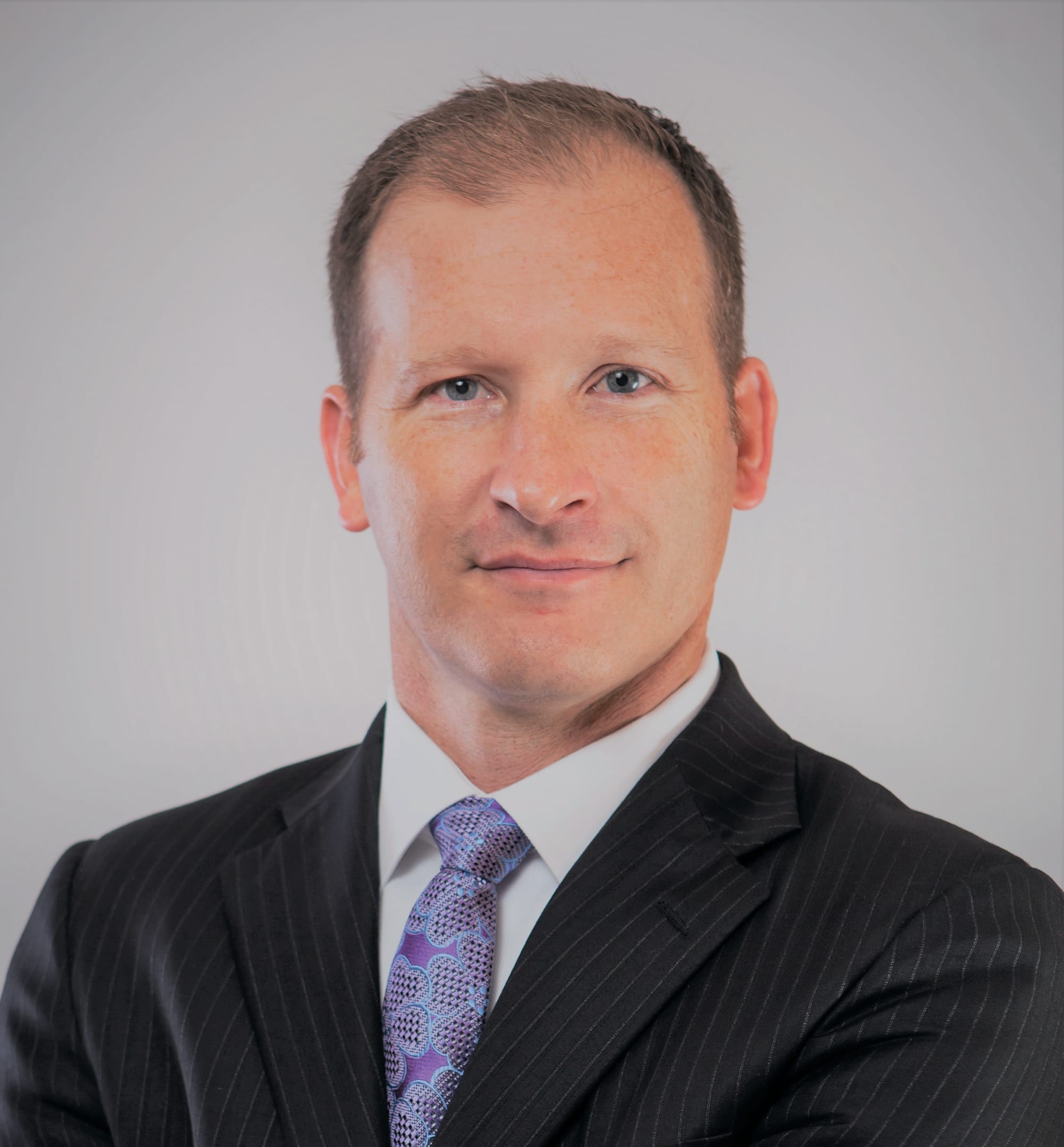
Mike Wysong, CEO CARE Pharmacies
WYSONG: New technology advancements in e-prescribing, EHRs, e-prescribing, mobile apps and telemedicine, will undoubtedly improve patient connectivity and continuity of care. These emerging pharmacy technologies should bolster the expanding role pharmacists play in providing care by driving better visibility, connectivity and coordination of care by practitioners and patients. These technologies will improve the content and quality of the consultations that pharmacists have with their patients and will impact how customers view their own health care decisions. Undoubtedly, care providers and patients will have access to more information quicker than they have ever had before, and the likely impact of that is pharmacists playing the role of quarterback in the medication selection and verification process. It will also allow patients to be more educated and to take on a larger role in navigating the nuances of their own health care decisions.
LASHIER: Reducing routine work in the store can result in increasing services. There are a variety of technological options available to enable pharmacies of many sizes to shift work, so that they can afford the time to deploy new health care services. Macro, micro and shared service fulfillment centers are becoming increasingly popular due to technology advancements that allow for high-density fulfillment and streamlined last-mile delivery.
As software systems continue to advance, the ability to intelligently route work to be completed, bi-directionally track work in progress, and manage multiple partner inventories within a single fulfillment center empowers pharmacies of many sizes and locations to take advantage of centralized services, gain time back in store, and extend their delivery and packaging options to meet the unique need of each patient. This can also free up time for pharmacy staff to focus on the patient’s health care regime, without sacrificing quality or patient choice.
BURKS: Patient engagement and awareness around new offerings is important. Patients are hard to reach, and you only have a matter of seconds to catch their attention. Intelligent messaging tools are critical for successfully reaching patients. Adding these tools is important and valuable, but ensuring those platforms can be integrated into one unified experience is essential. For these tools to be fully leveraged, they must make sense within your staff’s workflow and not waste time or add additional steps with multiple interfaces or logins. Our vision is to deliver a unified experience that integrates these tools alongside the pharmacy’s clinical and operational tools on a single platform.
HARDING: If pharmacists are to remain the most accessible health care professionals, then technology is necessary to relieve them of traditional dispensing responsibilities so that they can be front and center with patients when and where patients want to access care. Technology that delivers data sources of payer information will be critical to successfully adjudicating and reconciling claims for both medical claims and pharmacy claims coming from new patients. New offerings bring new patients who bring along additional prescription revenue from new and existing payers.
SULLIVAN: If the technologies are freeing up space and freeing up time for these services, they add value to the operation’s new health care model. We discussed this a bit above. Space is at a premium in retail. If you want open up one to four counseling rooms, you don’t want to take that space away from another revenue-producing area of the store. You also want to make sure that your staff is available to take on these additional activities. Technologies that reduce steps and save time are effectively making this happen.
SHAH: To best serve patients with connected, long-term care, we are empowering our pharmacists to employ the full set of skills they are trained and equipped to provide.
For example, we have deployed smart analytics that personalize interventions and help improve adherence and patient outcomes by identifying patients who are most in need, then triggering interventions through the most appropriate channels, which enables personalized conversations. Patients who need higher touchpoints are often those living with chronic conditions, such as diabetes, cancer and HIV.
We’re piloting enhanced screening services (e.g., HbA1c, blood pressure screenings) at the pharmacy to ensure guidelines are met to support prevention of common complications in diabetes. We also work with selected payor partners to pilot comprehensive disease state management interventions centered on providing personalized consultations to selected patients to educate and motivate them, to close gaps in care and resolve barriers to adherence.
JHAVERI: Adding automation like McKesson’s Central Fill as a Service (CFaaS), which fills and dispenses prescription medications for small or medium retail and health system pharmacies from a central location rather than on site at the individual pharmacy, can help enable pharmacists to focus on higher-value clinical work. When CFaaS takes care of the labeling, dispensing, imaging, capping, verifying, packing and mailing, pharmacies can reallocate resources previously spent on filling prescriptions to clinical services like vaccine programs. CFaaS can also support other programs like medication synchronization by custom packaging a patient’s multiple prescription medications.
When pharmacies have a comprehensive set of smart, connected care technologies, it centralizes pharmacy operations to decrease manual labor efforts, and helps pharmacists meet patient expectations while also expanding their business.
HEISER: There are a number of different ways that technology can help, but one of the most critical is being able to integrate data into workflow that enables more timely delivery of clinical interventions to support the likes of transitions of care, medication optimization, chronic care management and aging in place. The key is being able to identify within workflow patients who need to be engaged with for various reasons such as recent transition of care, gap in care, adherence and coordination of care need. And, of course, we need to have the ability to properly document the delivery of those services as well the technology and workflows to support billing for the service.
Q: How has automation helped boost medication adherence?
SULLIVAN: Certainly the growth of adherence packaging systems at stores, central fills and in-home are helping here. As well, automated IVR solutions that remind patients of prescription fulfillment needs and offering refill calls as needed are important. Last, by allowing a patient the easiest access to their medications, by time or location, they are most likely to get their medications on time and regularly.

Justin Heiser, COO Thrifty White Pharmacy
HEISER: There are numerous ways technology and automation have helped with medication adherence. One of the obvious barriers to adherence is affordability, and as out-of-pocket costs elevate so does prescription abandonment. Technologies such as Real-Time Prescription Benefit that automate the delivery of patient-specific medication costs, therapeutic alternatives and prior authorization requirement in workflow help the pharmacist address affordability and boost medication adherence. Compliance packaging and the technology needed to support packaging in that format, such as a blister or pouch have also helped, especially with more broad adoption in community-based populations. These packaging formats can also be helpful when paired with technology that monitors for adherence in real time. Often we find out too late that a patient has been nonadherent, so having the ability to monitor for and intervene on adherence issues in real time will be a big step forward as we are able to broaden its use.
JHAVERI: Medication management is crucial to improving health outcomes, especially in long-term care settings and for vulnerable and elderly populations. Older adults are often at higher risk for nonadherence, as they are more likely to be on multiple prescription medications, according to the Kaiser Family Foundation. But that’s not by choice, it’s a result of factors like low health literacy, poor communication, memory impairments, etc.
Automated adherence packaging helps meet both patient and caregiver needs. Packaging that indicates the date and time of day for medication administration can make a world of difference in adherence and outcomes. This same automation also helps streamline workflow, decreases potential human error in the pharmacy and offers greater inventory insights.
WYSONG: Noncompliance results from a patient’s inability to get their medications on time, or from a patient electively terminating their treatments because they do not see an immediate benefit. Many of the emerging technologies are focused on streamlining various components of the current process, which include improving the customer service experience, and providing a more comprehensive and advanced platform for better chronic disease state management. Additionally, these technologies provide a viable pathway to help patients become better educated, own and monitor their own health outside of a doctor’s office, and have more high-quality touchpoints with their care providers. By ensuring that patients’ needs are addressed quickly and documented throughout the entire health care continuum, the result will be improved outcomes and lower costs for patients and providers.

Lucas Ellefson, Director, Sales Outcomes
ELLEFSON: Automation has helped streamline workflow opportunities to predict and identify the right people to engage, but engaging them through a channel they prefer or are more likely to react to is just as important. Multichannel solutions provide a better experience and increase the likelihood of providing a better health outcome.
SHAH: Our infrastructure investments are empowering pharmacists to support continuity of care and provide important medication and disease state education. It also frees up time for pharmacists to facilitate access to financial assistance and address other common barriers to care in medically underserved and rural areas.
Other time-saving technology that has shifted the day-to-day focus for our pharmacists include clever features such as setting pill reminders, refilling by scanning prescriptions, combining family orders and a real-time, 24/7 chat option with pharmacists eliminate the need to run to the pharmacy for in-person consultations and prescription pickup, thanks to the option for same-day prescription delivery. Patients can set up recurring 90-day refills to make taking prescriptions easier and stay on track. Save a Trip refills align the pickup or delivery of all eligible maintenance medications to one convenient date.
LASHIER: Adherence pouch packaging continues to be a driver in improving medication adherence. Technology to automate compliance packaging certainly helps to provide a means for improved adherence, whether that be in-store packaging technology or centralized compliance packaging services. Automation that has allowed pharmacists more time which can be spent with patients can also play a crucial role in improving adherence.
HARDING: Automation, in various iterations, has been the primary driver of adherence since the introduction of the first refill reminder program. It has helped pharmacies address the EQUIPP standards for adherence, thus improving the quality of care that patients receive. And without automation driving adherence, pharmacies would not have been able to meet Part-D standards and may have endured excessive DIR [direct and indirect remuneration] fees penalizing poor performers. Connecting performance data to revenue recovery efforts through automation will keep business results in line with medication adherence improvements.
Q: How much can home diagnostics be expected to increase after people have gotten accustomed to sheltering at home, and how can pharmacy tie in to the increase with technologies?
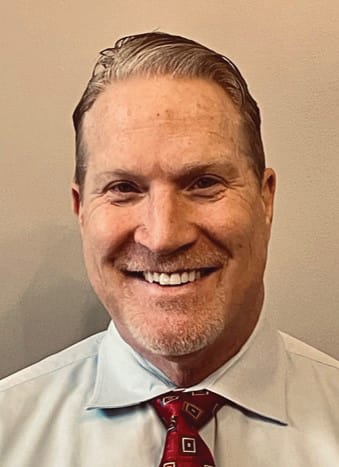
Denys Ashby, Director, Business Development Outcomes
ASHBY: The overall goal is to reach people where they are, and we are seeing tremendous growth with digital therapeutics and remote monitoring access and reimbursement. Consumers are also taking a vested interest in their own health care with wearables and watches to track heart rate, fitness capabilities, and setting performance or tracking goals, which aids technology familiarity and advances their level of comfort with in-home and self-monitoring capabilities.
HARDING: The opportunity for pharmacy is to be the hub location for interpreting results from home diagnostics and wearable technology. With the help of provider status and collaborative practice agreements (CPAs) or state mandates, pharmacies can initiate/prescribe/recommend treatment. Pharmacists can step up and be the first stop outside the home for health care as opposed to the traditional last stop.

Rina Shah, Group Vice President, Pharmacy of the Future and Healthcare Segments Walgreens
SHAH: The pandemic magnified existing gaps in health care that prevent people — especially those from traditionally medically underserved populations — from accessing necessary services and treatment.
In response to the Biden administration’s call for pharmacies to help make this winter a healthier one for Americans, we launched a program in partnership with DoorDash and Uber that offers free same-day delivery of Paxlovid for those with a prescription. This partnership is aimed at reducing the chance that someone sick must go out and expose others in order to get their Paxlovid prescription.
We have plans to expand free same-day delivery to include HIV treatment — in line with the Biden administration’s efforts to address HIV/AIDS in the U.S.
Additionally, Walgreens has a 24/7 Pharmacy Chat that allows patients to have a confidential chat with a pharmacy expert. Patients can also use Walgreens Find Care to access in-person and virtual health care expertise and connect with local and national providers they trust, all through the convenience of the Walgreens mobile app or online at walgreens.com/findcare.
LASHIER: We would expect that home diagnostics will continue to increase and, with pharmacists providing patient education on how and when to best use these devices, their use will continue to grow. This is another key factor in improving access to health care and moving the pharmacist to the center of the care cycle. According to the Journal of American Pharmacists Association, almost 90% of the U.S. population lives within five miles of a community pharmacy, having the ability to consult with a pharmacist on home diagnostic test results, in near real time, will become an invaluable service for acute, ongoing and specialty care.
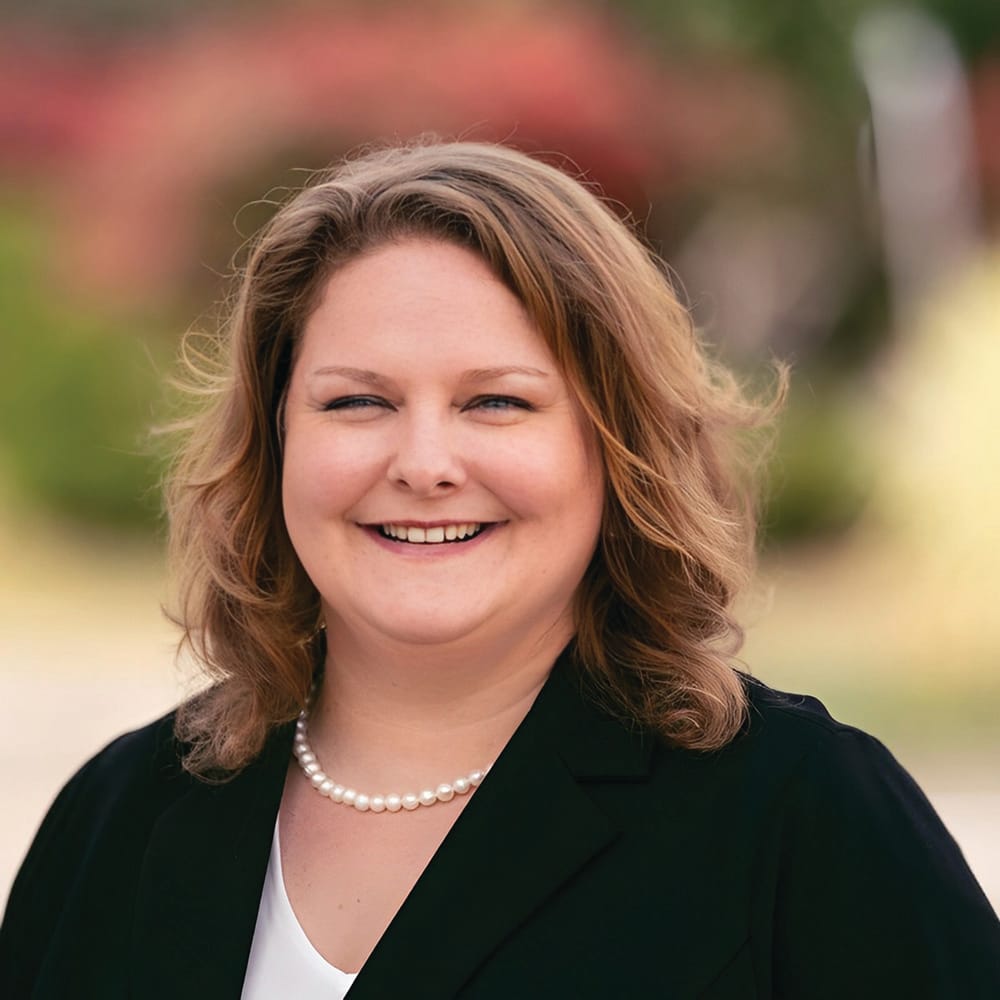
Alecia Lashier, Chief Automation Officer iA
WYSONG: Undoubtedly, there will be a significant increase in the utilization of at-home diagnostic and monitoring test kits post pandemic. These kits offer a patient the prospects of privacy, detection, prevention, convenience and affordability. As we look for new ways to comprehensively fill in a patient’s treatment gaps, at-home diagnostic kits will provide patients and caregivers with actionable information which can be used to identify and treat issues before they became systemic or nontreatable. As pharmacies take on a bigger role within the changing landscape of health care, it is likely that at-home testing will be a natural adjunct to the services that are currently being offered to customers.
JHAVERI: The accelerated adoption of O-T-C COVID-19 rapid antigen tests used for at-home self-testing has driven DIY testing to become a high-growth product category. People are used to the convenience and speed of diagnosis — and significantly, the low cost. It has also helped people recognize the importance of testing to protect others. Meanwhile, the COVID-19 pandemic underscored the importance of telemedicine and alternative care sites, like the pharmacy.
These factors represent a remarkable opportunity for pharmacy growth. Pharmacies can continue to solidify their position as health care hubs as the primary retailer for DIY diagnostics kits and as the go-to site for symptom management with O-T-C products or engaging in telemedicine for prescribing needs.
To take it a step further, pharmacies could consider an end-to-end solution that starts with self-testing, then advice, direction and feedback or bundling tests with related products and services. This helps pharmacies boost the customer experience, store relevance and revenue.
HEISER: I am excited about the evolution and ease of use of technology that allows our pharmacy teams the ability to manage the patient outside the four walls of our pharmacy. It is becoming easier and easier to gather data from patients in real time. Having access to real-time data allows us to make more timely interventions with patients. Pharmacists have a critical role to play in helping patients age in place, and these technologies that we have been talking about enable the pharmacist to have a larger impact. Managing complex medication regimens and poor medication adherence is one of the biggest barriers for our aging population to remain at home. One of the big challenges is proper reimbursement for these efforts, and that is something we have been talking about for a while and in some instances have found paths forward but need more universal payment solutions to help address this growing need.
SULLIVAN: We see telepharmacy playing a role here as well.

